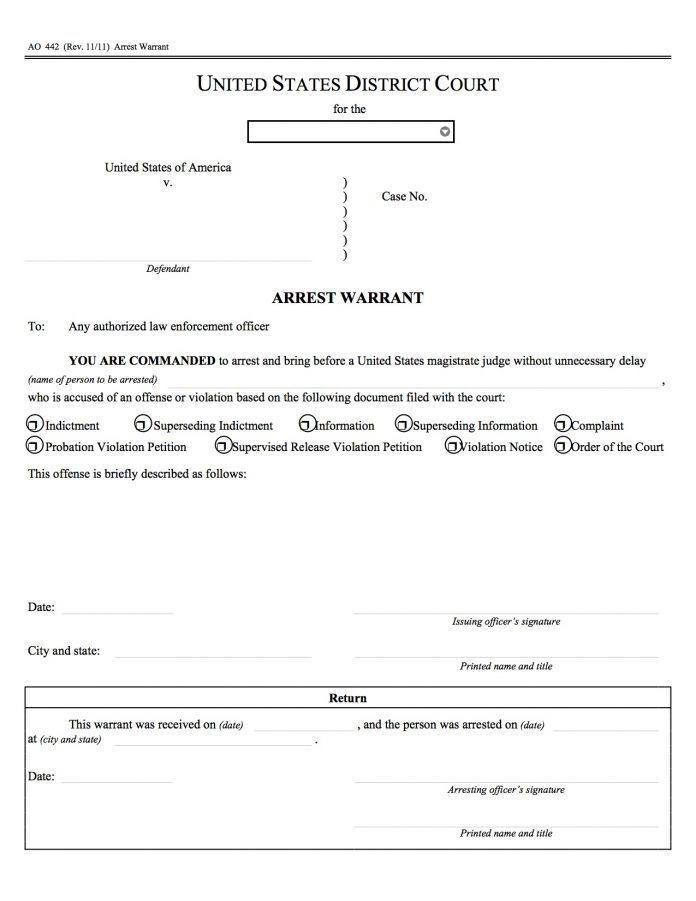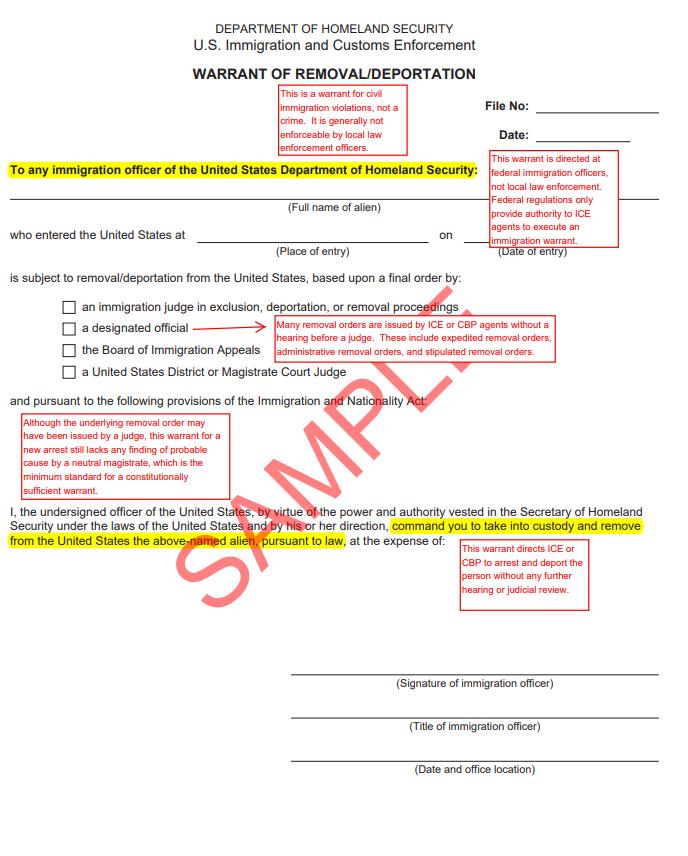Immigration and Customs Enforcement and Warrants
Kerri A. Wright, Principal, and Rachel E. Fairley, Associate, Porzio Bromberg and Newman, P.C.

ICE & WARRANTS: WHAT YOUR BUSINESS NEEDS TO KNOW

Kerri A. Wright, Esq.
Rachel E. Fairley, Esq.


Kerri A. Wright, Principal, and Rachel E. Fairley, Associate, Porzio Bromberg and Newman, P.C.


Kerri A. Wright, Esq.
Rachel E. Fairley, Esq.

Two main reasons:
• To conduct an inspection of a business’ I-9 employment authorization records
• To conduct an enforcement action to find and detain people, documents, or property within a business


You are required to:
• Complete an 1-9 form for all new employees
• Keep I-9 forms on file for every current employee.
• Maintain the forms for 3 years after hire date or 1 year after termination, whichever is later.
You are not required to:
• Be a document expert
• Keep copies of the documents an employee presents


Federal agencies, including ICE may inspect a business’ I-9 forms to ensure compliance:
An I-9 audit begins with a Notice of Inspection (NOI).
You are entitled to 3 days’ notice before you must turn over your files.
If federal agents want to enter the private areas of your business to look for:
• Documents
• Property
• People They must have either your permission or a judicial warrant



A Judicial Warrant can be either a search warrant or an arrest warrant. It must be:
1. signed by a judicial officer (a Judge or Magistrate);
2. describe the place to be searched, and the persons or things to be seized; and
3. have the correct date and have been issued within the past 14 days


A Search Warrant is a type of judicial warrant that when properly executed, allows police to enter the address listed on the warrant. The warrant must state specifically the place to be searched and the items to be seized. Officers may only search the areas and for the items listed in the warrant.

An Arrest Warrant allows police to detain a person in connection with a particular offense. If a warrant is property executed, staff should provide agents with access to areas specified in the warrant.



Read it and understand the scope of the warrant. It may identify a person to arrest, list certain locations to search, or identify documents or property to seize.
• Check for an expiration date
• Check for accuracy
• Check that ICE follows the warrant
• Document the actions of the ICE agent


“FORM I-200”

An ICE Administrative Warrant is signed by an immigration officer, not a judicial officer (judge or magistrate). ICE administrative warrants are far more limited than judicial warrants.
An ICE Administrative Warrant allows ICE officers to arrents non-citizens suspected of committing immigration violations.


You do not have to consent to a search
• You may decline to answer any questions about the subject of the warrant. You can say:
• This is an administrative warrant. I will only comply with a judicial warrant.
• I do not give you permission to enter. I do not consent to a search.
• I do not wish to answer any questions. I wish to speak with a lawyer.


A Notice to Appear is a document that instructs an individual to appear before an immigration judge. This is the first step in starting removal proceedings against them.
A Subpoena is a written request for information that gives the recipient certain amount of time to respond.




What authority do Executive Orders (“EOs”) have, and what is the impact of President Trump’s January 20, 2025
EO “Protecting the American People Against Violence”?

Do we have to let ICE agents into our business?
ICE agents, can enter public areas of your business without permission
• Public areas include: parking lots, lobbies and other places that are open to the public
ICE agents may not enter private areas of your business without either your permission or a judicial warrant
• Private areas include: back offices and any other area that is not open to the public


1. Clearly mark private spaces Post signs that say “Private,” “Employees Only,” or “Do Not Enter.”
2. Train your workers and managers do not consent to ICE agents entering private areas.
3. Keep your I-9 files separate. Do not turn over extra files. Remember you are entitled to 3-days’ notice after an NO

4. Establish a protocol. Assign a point person who will:
• Speak with ICE agents and determine the purpose of their visit
• Ask to see a warrant
• Decline to consent to a search if presented with an Administrative Warrant
• Contact the business owner, attorney, or other authority
• Document ICE actions
• Make sure all your workers know your point person


How hospitable should we be when/if ICE

If ICE “misbehaves” (e.g., pushes into the building, refuses to provide a warrant), can/should we call the local police?

No warrant means no access, right?
ICE does not need a warrant to enter the private spaces of your business when there are “exigent circumstances.”
ICE may enter private spaces without a warrant to respond to an emergency, apprehend a fleeing suspect, or stop the destruction of evidence.
This means that if ICE sees people running, they may have reason to chase.


Can someone accompany staff and/or the client for ICE interviews?

How should we be handling requests for information and/or records?


